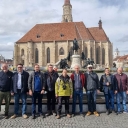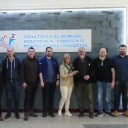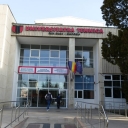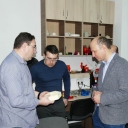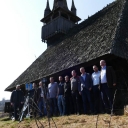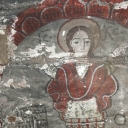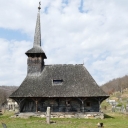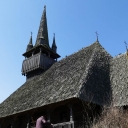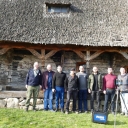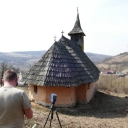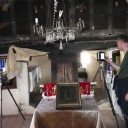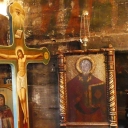From March 28 to April 1, 2022, a group of researchers from the Department of Computer Science of the Lublin University of Technology carried out 3D scanning of wooden sacred architecture monuments as a part of the 1st Carpathian Scientific Expedition of Lublin University of Technology. The expedition operated in Transylvania (Romania) – in the city of Cluj-Napoca and its vicinity. The expedition cooperated with employees of the Technical University in Cluj-Napoca, in particular with Prof. Neamtu Calin and his associates. The team of employees of the Department of Computer Science met with the management of the Faculty of Industrial Engineering, Robotics and Production Management at the Technical University of Cluj-Napoca, under the direction of the Dean of the Faculty: Prof. Corina Birleanu. At the meeting, the work of the Department of Computer Science related to 3D scanning of the cultural heritage of mankind was presented, in particular as part of the “3D Digital Silk Road” project. Arrangements were also made regarding further scientific cooperation between universities in the area of the use of information technologies in the area of documenting, research, preservation and dissemination of cultural heritage.
On the first day of the expedition, a 3D scan (inside and outside) of the wooden church of the Holy Archangels Michael and Gabriel in the village of Paniceni, about 40 km from Cluj-Napoca, was performed. The elements of the church equipment were also scanned in 3D technology.
On the next days, the following wooden churches were scanned:
- dedicated to Santa Claus in Creaca (about 80 km from Cluj-Napoca),
- dedicated to the Archangels Michael and Gabriel in the village of Targusor (about 56 km from Cluj-Napoca),
- under the invocation of Santa Claus in the village of Pausa (about 72 km from Cluj-Napoca),
- in the open-air museum in Cluj-Napoca.
The works related to 3D scanning of monuments of wooden architecture were carried out thanks to the excellent organization of access to them provided by the Romanian colleagues. The high efficiency of work was ensured by the parallel use of three scanners: two FARO laser scanners and one on the structural light. All scanners are the property of Lab3D of the Department of Computer Science, Lublin University of Technology. The results of the trip are about 45 GB of raw data obtained with 3D scanners and 10 GB of digital photos, intended for documenting the work and for use in the photogrammetry technique, called structure from motion.
The expedition met with great interest and great kindness from people taking care of the monuments of Transylvania’s cultural heritage.
